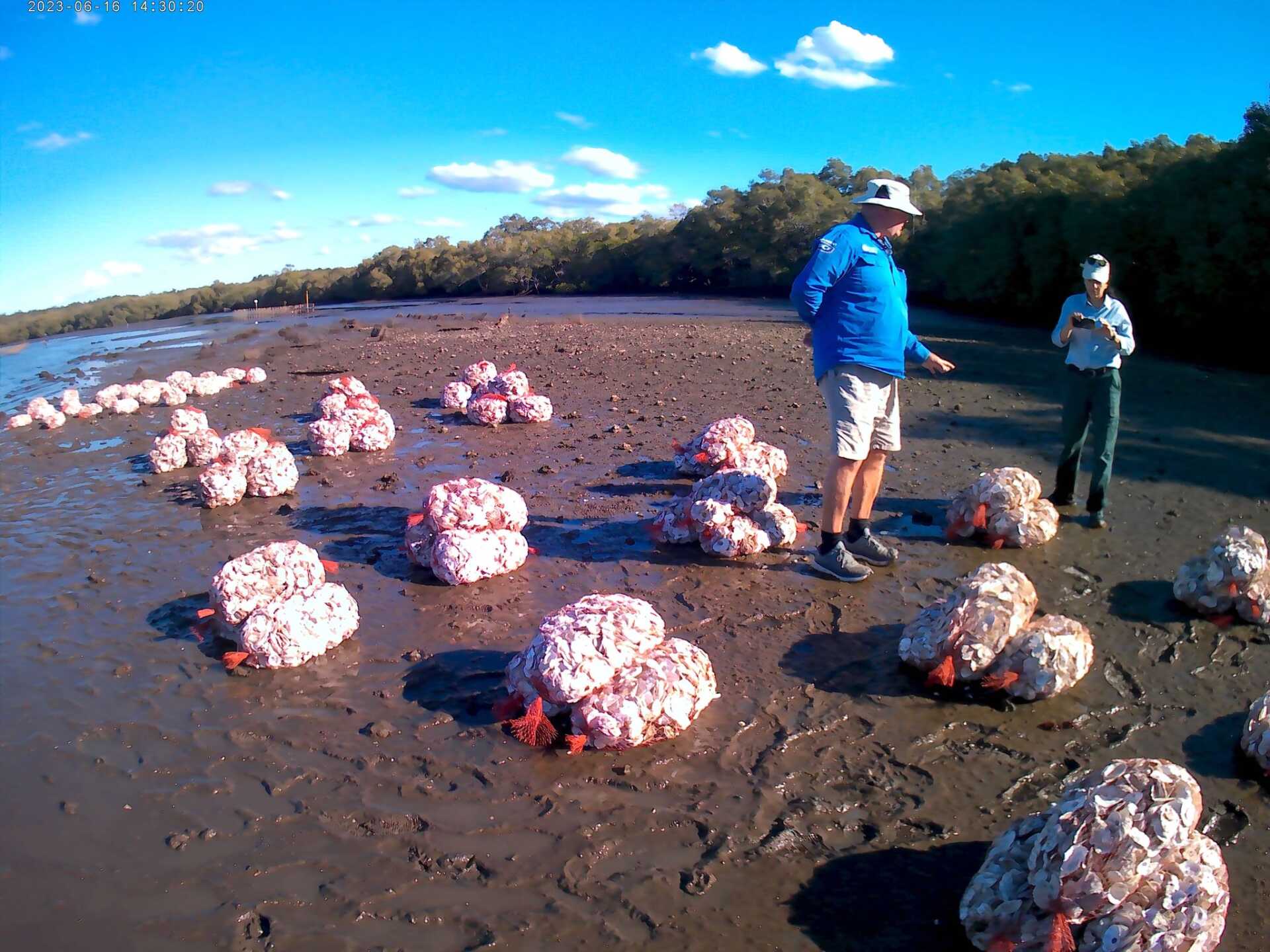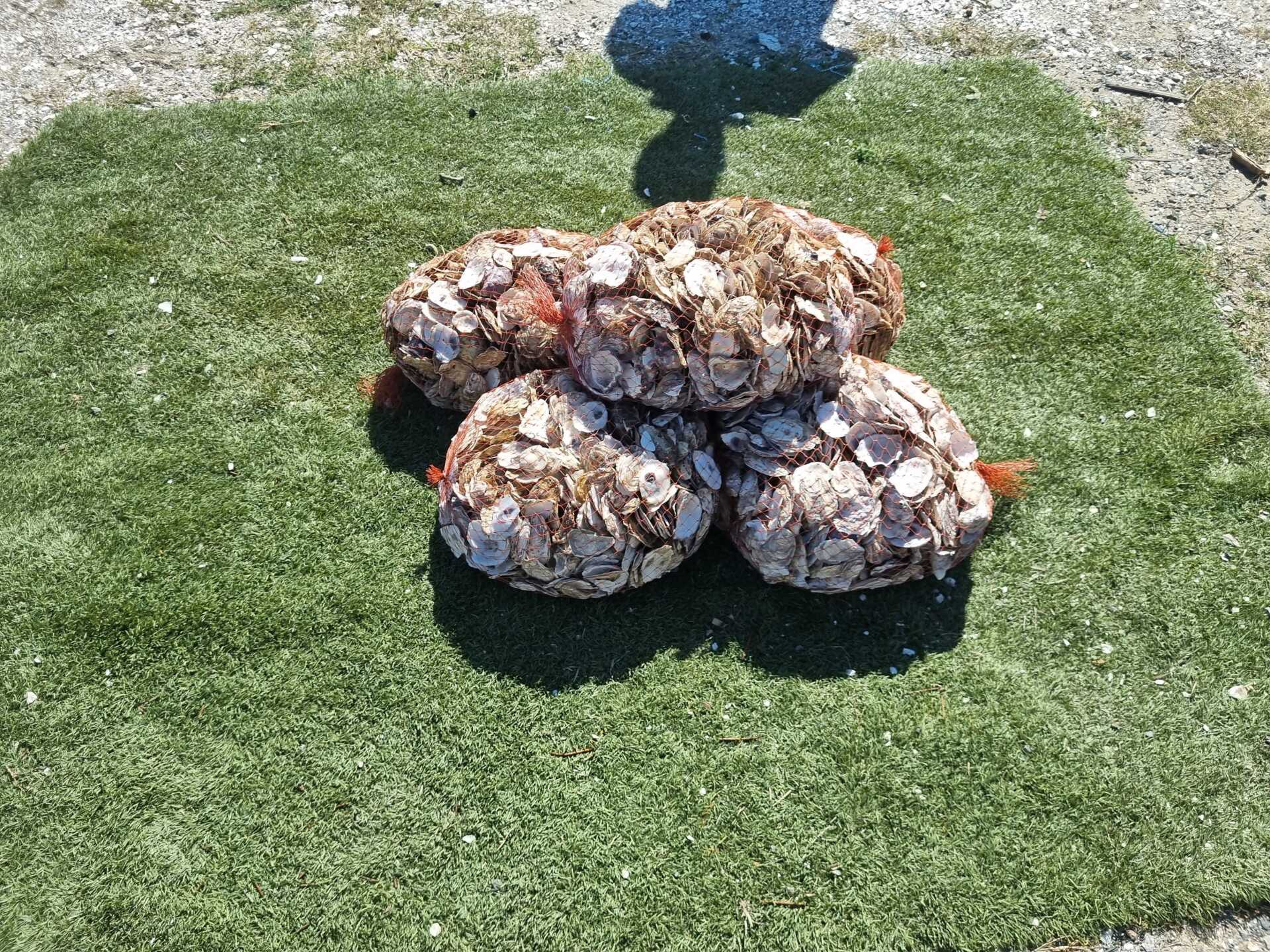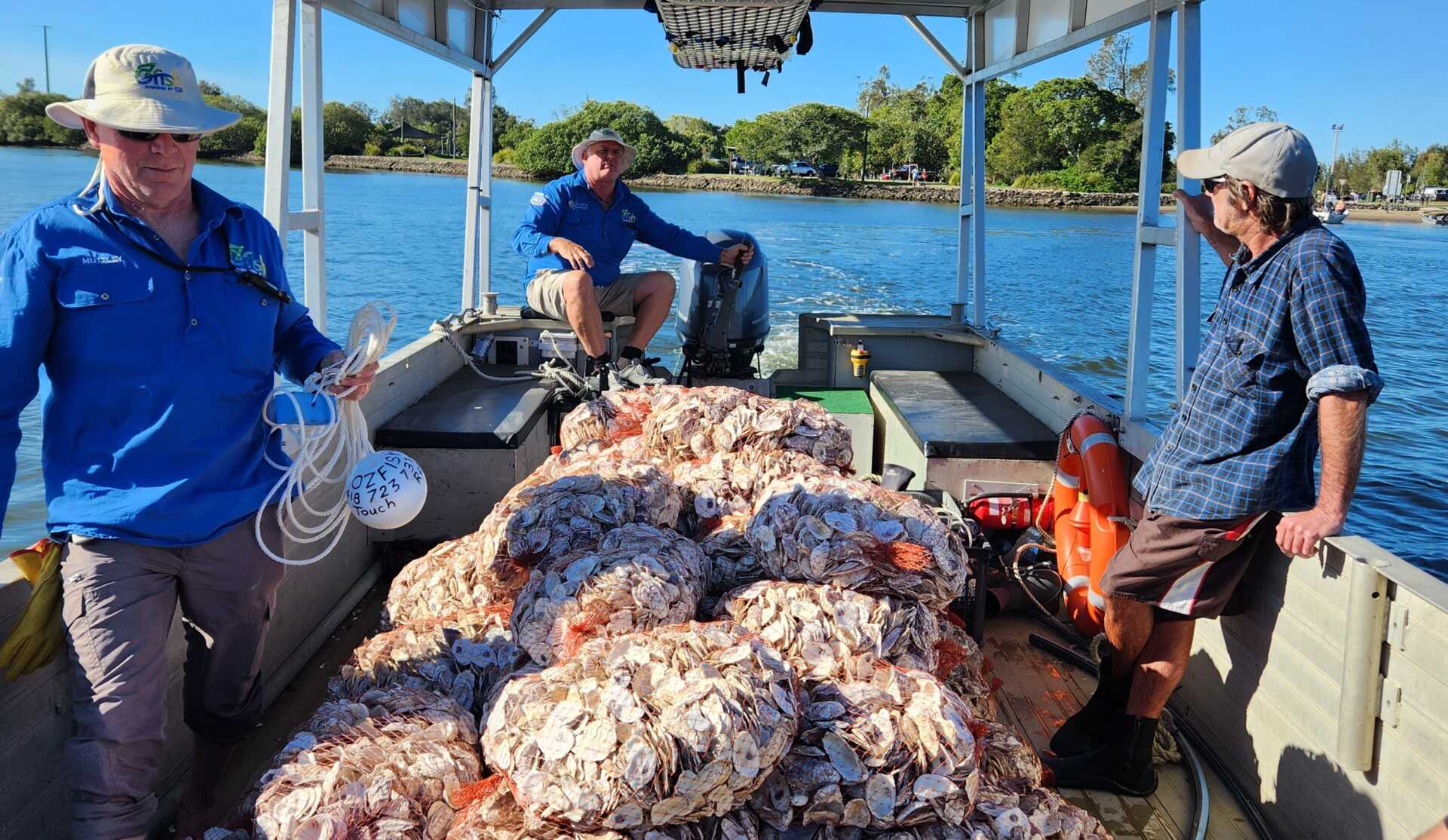Innovative trial could be game-changer for Australian shellfish restoration

A new product being trialled in South-East Queensland could be a game-changer for shellfish restoration in Australia.
A mesh bag made from biopolymers from 100 per cent vegetation that has been sustainably sourced is being tested to see if they can grow oyster clusters in the Maroochy River and Moreton Bay.
OzFish Unlimited, Australia’s fishing conservation charity, has teamed up with Healthy Land and Water through the National Landcare Program and the Bunya Bunya Country Aboriginal Corporation to test out the pilot project.
OzFish is using the trial to see if the mesh bags (known as BESE bags) could become a lightweight alternative to the Robust Oyster Baskets (ROBs), which are used to restore shellfish populations but are much heavier, expensive and more time consuming to construct.
“The biggest issue is not just getting the shell in the water but we want to create a 3-D structure to allow more organisms to grow on the shell such as baby oysters and also to provide habitat for fish,” said Abbie Taylor, OzFish Project Manager – South East Queensland.
“With our standard ROBs, they’re very effective in the habitat they create because they create that vertical relief from the sea floor. But the ROBs are quite heavy, up to 20kg because we’re using a square mesh steel to make a triangular product. There’s lots of sharp edges and they can be a little bit hazardous.
“By creating a structure that’s got that height and complexity, you’re creating multiple areas for new oysters to recruit and creating additional habitat for crabs, worms, snails and all those other critters to hide in.
“We’re trialling three configurations of BESE bags – individual bags just dotted around our ROBs, stacks of three (two on the bottom and one on top) and stacks of five, one on top of the other. One of the benefits of this bag is they slot into each other. They’re like sandbags – they’ll cement in with each other.”
OzFish volunteers and members of the Bunya Bunya Country Aboriginal Corporation placed 90 bags each at oyster leases in Moreton Bay and Bli Bli on the Maroochy River as part of the trial.
“They come in 100-metre lengths and you can cut them to size. They’re super easy to fill. It’s like a sausage skin, you have a big roll and tie off one end with a knot or a C clip and you put it in a bucket, fill it with shell and then tie off the other end,” Taylor added.
“It’s super quick. You just need a bucket and a shovel and a pile of shell to fill it.”
Dr Ben Gilby, a Senior Lecturer in Animal Ecology at the University of the Sunshine Coast, has been working with OzFish for several years and he is confident this project will deliver on multiple fronts.
“All evidence is that it will be a success but we will monitor that over the next 6-12 months. The fascinating thing for me is that this is a new process to restore oysters,” he said.
“There’s been many, many different restoration ways trialled around the world and these bags are great because they’re biodegradable. In other places overseas they use monofilament plastic mesh, which is not as great for the environment.
“Whenever you restore oysters, it has massive biodiversity benefits because the nooks and crannies among the oysters provide all sorts of opportunities for marine life to grow.
“You get juvenile fish and sponges and all sorts of invertebrate life. When you break apart one of these oyster clusters you’re struck by the diversity of things that are in there.”
Water quality should also improve exponentially, according to Dr Gilby.
“One adult oyster filters one bathtub of water per day. They take in a lot of nitrogen and a lot of pollutants out of the water column, which is one of the most important things they do,” he added.
“They’re even doing things like taking sediment out of the water when floods come through and literally deposit it underneath them and store that for many years. They’re very efficient little creatures.”
The BESE bags have been placed in intertidal areas and it will not be known until the end of the year at the earliest whether the trial has been successful with one of the main concerns that the local wildlife will find the material too tasty to resist.
“How is the mesh going to act? Because it is a biopolymer, it might be very tasty to a lot of things. We’ve got no idea if anything is going to eat it and tear holes in it or how it will go in tidal movement,” Taylor added.
“As the bags are made from a beech tree, it could be tasty to a lot of herbivorous creatures like snails.”
The mesh is supposed to last between five and 15 years but how it copes with Australian conditions is another variable.
“It should break down in that timeframe,” Taylor said.
“We want it to hold its structure for a few years before the new oysters start to grow through it but we don’t know if there’s any other variables. Even in our climate – this is a northern hemisphere product so we don’t know how it will work in Australia.
“How will it cope with that constant back and forth of water? It’s very much a wait and see.”
OzFish will monitor the sites in the next 3-6 months to see if multiple generations of oysters are being produced with the mesh holding firm.
If that occurs, the plan is to roll this method out as one of the recommended oyster restoration options after further testing.
It could be deployed in coastal and inland areas throughout Australia and it would not need significant infrastructure to be built in other sites like the massive Oyster World shellfish restoration facility at Moreton Bay.
“This will allow rapid and easy deployment of shell anywhere. If it does work it will be a real game-changer for community oyster restoration,” Taylor added.
The polymesh can also be used for habitat restoration projects like erosion control – they can be filled with soil, rocks or seeds and placed pretty much anywhere.
Since European settlement in Australia in the late 1700s, shellfish populations have been nearly wiped out in many areas to critically endangered levels.
“The best estimates are that somewhere between 96-99% of oysters are gone from Moreton Bay,” Dr Gilby added.
“We talk a lot about endangered ecosystems like corals and seagrass but there’s none worse than oysters.
“There was no shellfish restoration in Australia up until 2015 despite the fact it was successful overseas and now there’s 50 projects right across Australia and expanding really rapidly because we recognise what we’ve done to this poor habitat.”
This project was funded by the Healthy Land and Water, the Australian Government’s National Landcare Program, OzFish Unlimited and BCF – Boating, Camping, Fishing.




